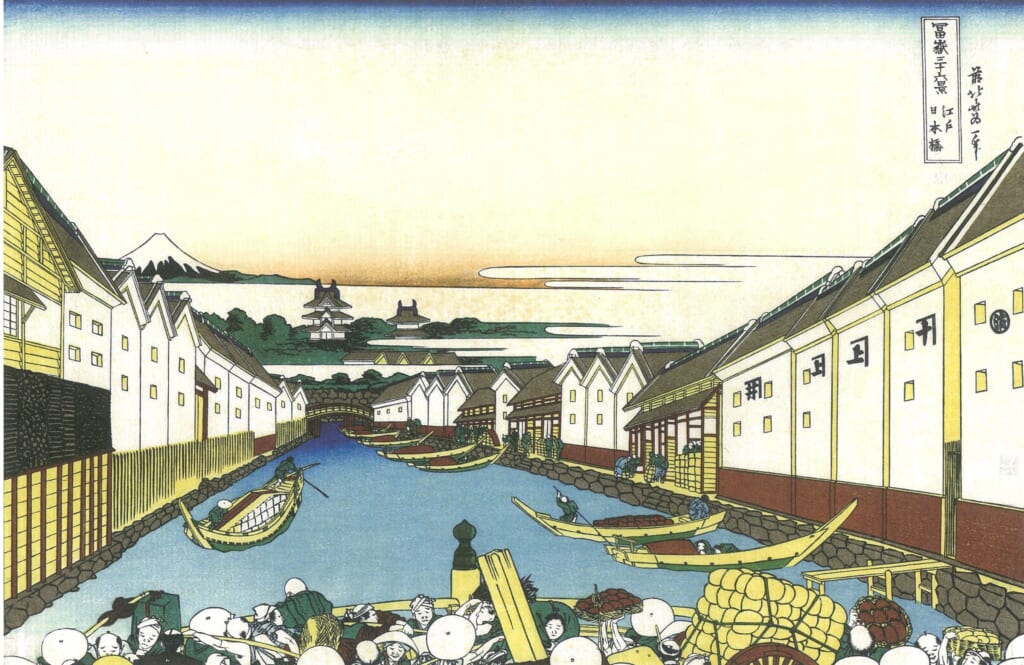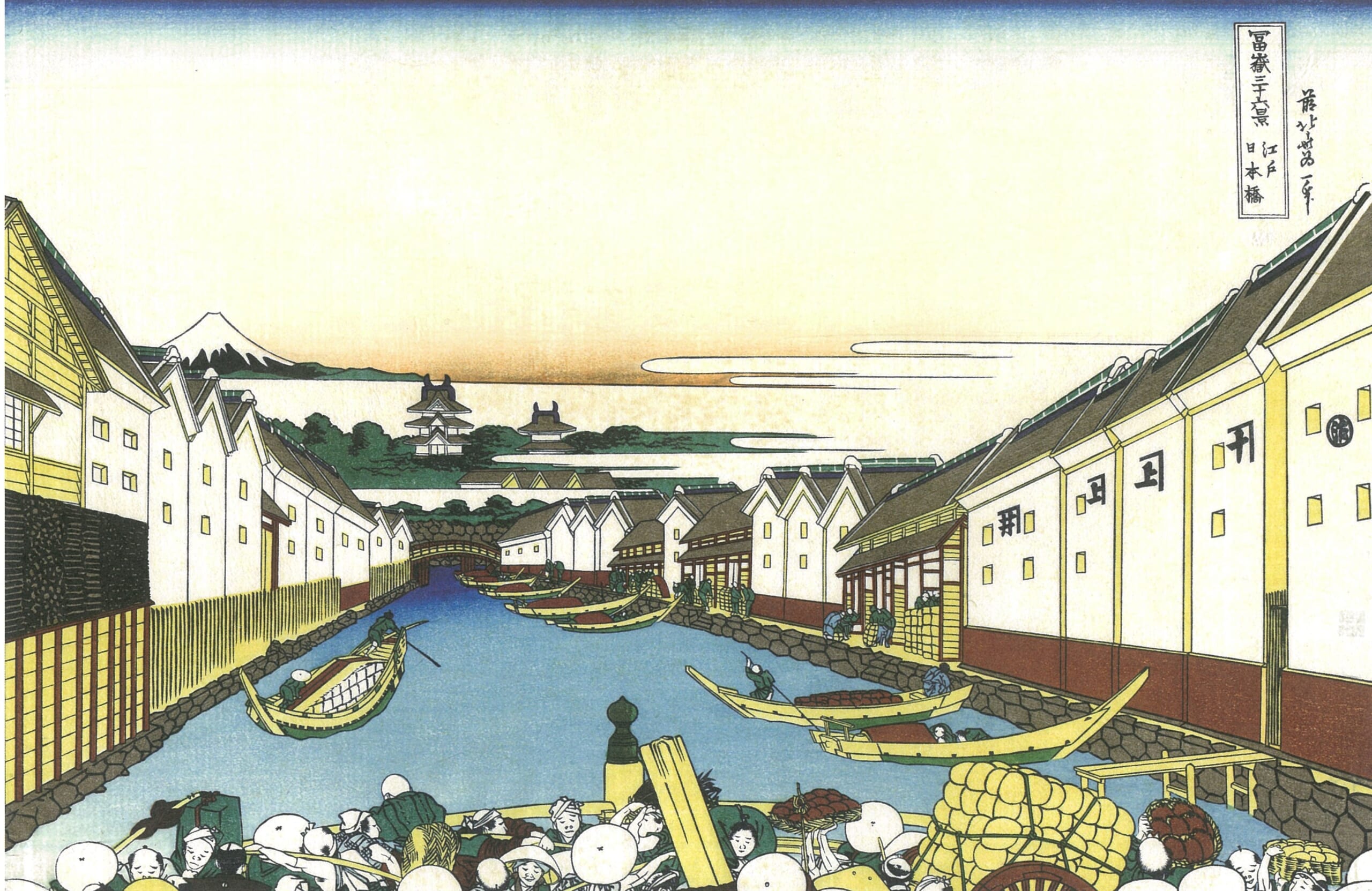Katsushika Hokusai’s ukiyo-e I will explain Edo Nihonbashi in Thirty-six Views of Mount Fuji.
During the Edo period, Nihonbashi was the starting point of the Five Highways and was an important transportation and distribution point in Edo.
Nihonbashi is the starting point of the Tokaido and prospered as a fish market.
This ukiyo-e depicts a scene looking west from Nihonbashi.
The storehouses that line both banks of the river are drawn using the Western perspective painting method.
At the vanishing point is Edo Castle, and beyond that is Mt. Fuji.
The Nihonbashi bridge in the foreground has people coming and going who can no longer walk in a straight line.
On the bridge, young people from the fish market, people with balance poles, carts, lumber, etc. express that this is the center of Edo.
A famous ukiyo-e print related to Nihonbashi begins with the Nihonbashi morning scene in Hiroshige Utagawa’s Fifty-three Stations of the Tokaido.
As for the song ‘Oedo Nihonbashi’, there is a folk song in Nihonbashi, Tokyo whose lyrics and composer are unknown.
It is a folk song that sang the names of the fifty-three stations of the Tokaido from Nihonbashi, the starting point, to Kyoto.
This ukiyo-e is from around 1830 to 1832. Hokusai is around 72 years old.



